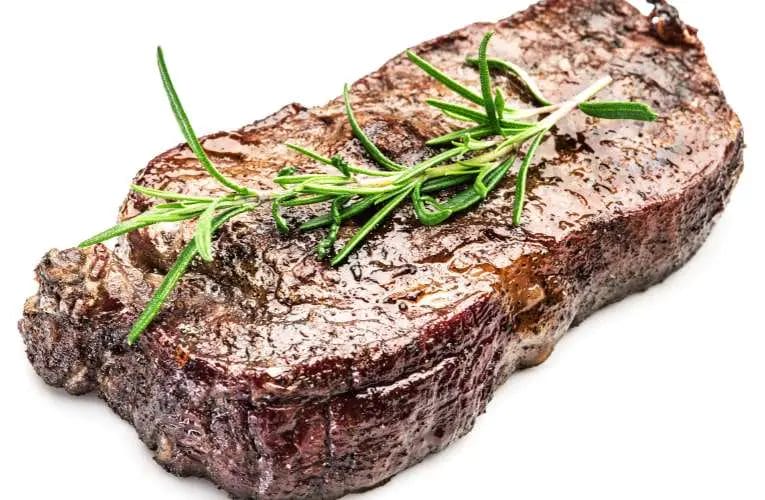Wondering if a well-done steak can still be tender and juicy?
While cooking a steak to well-done usually results in a firmer texture, it doesn’t necessarily mean it will be chewy. The key lies in using the right cooking techniques and choosing the right cut of meat.
By properly seasoning, searing, and allowing the steak to rest after cooking, you can achieve a well-done steak that is still deliciously tender. Discover the secrets to cooking a perfectly well-done steak that will melt in your mouth.
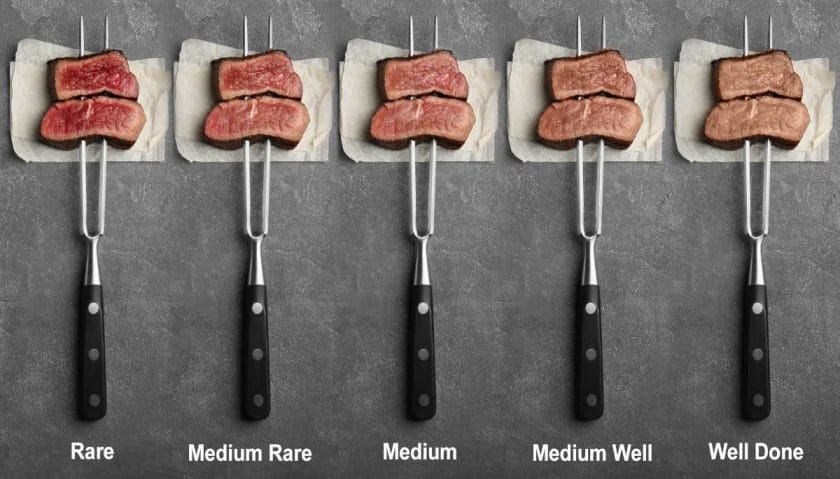
Perfectly Cooked Steaks: Achieving the Ideal Texture
When it comes to cooking steaks, achieving the perfect texture is essential. A well-cooked steak should have a tender, juicy interior with a caramelized crust on the outside.
In this section, we will explore the key factors that contribute to achieving the ideal texture for your steaks.
1. Quality Meat
The quality of the meat you choose plays a significant role in determining the texture of your cooked steaks. Opt for cuts of meat that are known for their tenderness, such as ribeye, filet mignon, or strip steak.
Look for marbling, which refers to the thin streaks of fat that run through the meat. Marbling enhances flavor and helps keep the steak moist during cooking.
2. Proper Seasoning
Seasoning your steaks correctly is crucial for enhancing the flavor and texture. Before cooking, generously season the steaks with salt and pepper, allowing the seasoning to penetrate the meat. For an extra flavor boost, consider adding herbs, garlic, or a steak seasoning rub.
3. Preheating the Grill or Pan
Whether you prefer grilling or pan-searing your steaks, it is essential to preheat the cooking surface. Preheating ensures that the meat sears quickly, creating a flavorful crust while locking in the juices. A hot grill or pan also helps to prevent the steaks from sticking.
4. Cooking Time and Temperature
The cooking time and temperature greatly impact the texture of your steaks. For rare steaks, aim for an internal temperature of 125°F (52°C). Medium-rare steaks should reach 135°F (57°C), while medium steaks should be cooked to 145°F (63°C). Remember to use a meat thermometer to ensure accuracy.
5. Resting Period
Allowing your steaks to rest after cooking is essential for achieving optimal texture. During the resting period, the juices redistribute throughout the meat, resulting in a more tender and flavorful steak. Rest the cooked steaks for about 5-10 minutes under a foil tent before serving.
6. Slicing Against the Grain
When it comes time to serve your steaks, make sure to slice them against the grain. The grain refers to the direction in which the muscle fibers run. Slicing against the grain helps break up the muscle fibers, resulting in a more tender bite.
7. Experiment with Sous Vide Cooking
If you’re looking to take your steak-cooking skills to the next level, consider experimenting with sous vide cooking. Sous vide involves vacuum-sealing the steaks and cooking them in a precisely controlled water bath.
This method ensures even cooking throughout the meat and results in incredibly tender steaks.
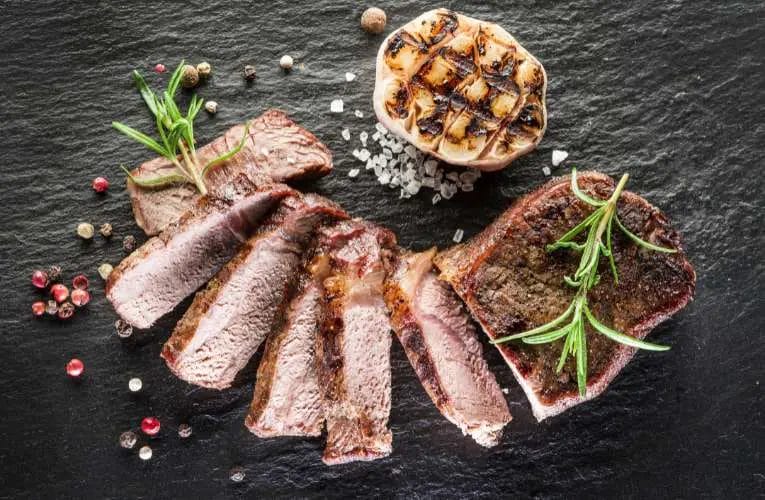
Overcooked vs. Undercooked Steaks: Finding the Sweet Spot
When it comes to cooking steaks, finding the perfect balance between overcooked and undercooked can be a challenge. The ideal steak is juicy, tender, and cooked to just the right temperature.
In this section, we will explore the differences between overcooked and undercooked steaks and provide tips on how to achieve the perfect steak every time.
The Effects of Overcooking
Overcooking a steak can result in a dry, tough piece of meat that lacks flavor. When a steak is cooked for too long, the proteins in the meat shrink and push out the juices, leading to a dry texture.
Additionally, overcooking can cause the steak to become charred and burnt, resulting in a bitter taste. The longer a steak is cooked, the more pronounced these negative effects become.
Overcooked steaks are often characterized by their lack of pink or redness in the center. Instead, the meat may appear gray or brown throughout. The texture is firm and chewy, making it less enjoyable to eat. The flavors are also diminished, as the natural juices have been evaporated or cooked out.
The Dangers of Undercooking
While undercooking a steak may seem less detrimental than overcooking, it poses its own set of risks. Undercooked steaks can harbor harmful bacteria such as E. coli or salmonella, which can lead to foodborne illnesses.
These bacteria are typically destroyed when meat is cooked to the proper temperature, but undercooking allows them to survive.
Undercooked steaks are characterized by their pink or red center, with little to no browning on the outside. The texture is often described as rare or medium-rare, with a soft and tender consistency.
While some individuals prefer their steaks rare, it is important to ensure that the meat has reached a safe internal temperature to eliminate any potential health risks.
Finding the Sweet Spot
The key to achieving the perfect steak is finding the sweet spot between overcooked and undercooked. This involves cooking the steak to the desired level of doneness while retaining its juiciness and flavor. Here are some tips to help you find that balance:
- Use a meat thermometer: Invest in a reliable meat thermometer to accurately gauge the internal temperature of the steak. This will help you determine when the steak has reached the desired level of doneness.
- Learn the touch test: With practice, you can learn to gauge the doneness of a steak by touching it. A rare steak will feel soft and squishy, while a medium steak will have some firmness but still yield to pressure. A well-done steak will feel firm and springy.
- Let the steak rest: After cooking, allow the steak to rest for a few minutes before slicing. This allows the juices to redistribute throughout the meat, resulting in a more flavorful and moist steak.
- Experiment with cooking times: Different cuts of steak and personal preferences may require different cooking times. It is essential to experiment and adjust your cooking times accordingly to achieve the desired level of doneness.
The Science Behind Tender Steaks: Understanding the Maillard Reaction
When it comes to cooking a tender and delicious steak, understanding the science behind the process can make all the difference. One of the key reactions that occur during cooking is known as the Maillard reaction.
This chemical process is responsible for the browning and flavor development that takes place when proteins and sugars interact under high heat.
The Maillard reaction was first discovered by French chemist Louis-Camille Maillard in the early 20th century. It occurs when amino acids, which are the building blocks of proteins, react with reducing sugars, such as glucose and fructose, at temperatures above 285°F (140°C).
The result is a complex series of chemical reactions that produce a range of flavor compounds and brown pigments.
The Role of Heat
Heat plays a crucial role in the Maillard reaction. When a steak is exposed to high heat, the surface temperature rapidly rises, causing the proteins and reducing sugars present in the meat to undergo chemical changes.
These changes result in the characteristic browning and aromas associated with a perfectly cooked steak.
During the Maillard reaction, the amino acids and reducing sugars undergo a process called glycation. This involves the rearrangement and bonding of molecules to form new compounds.
As a result, a wide variety of flavor compounds are produced, including aldehydes, ketones, and pyrazines, which contribute to the rich and savory taste of a well-cooked steak.
Tenderizing Effect
In addition to adding flavor and color, the Maillard reaction also plays a role in tenderizing the meat. When proteins and reducing sugars react, they form chemical bonds that help to break down the tough muscle fibers in the meat. This results in a more tender and juicy steak.
Furthermore, the Maillard reaction also generates moisture-absorbing compounds, such as melanoidins, which help to retain the natural juices within the meat. As a result, the cooked steak remains moist and succulent, making it a delight to bite into.
Controlling the Maillard Reaction
While the Maillard reaction is a desirable process in steak cooking, it is important to control it to achieve the desired results. Here are a few tips to help you achieve the perfect Maillard reaction:
- Preheat your cooking surface: Make sure your grill, pan, or oven is preheated to the desired temperature. This ensures that the surface of the steak reaches the necessary heat for the Maillard reaction to occur.
- Pat dry the steak: Before cooking, pat dry the steak with a paper towel. Excess moisture can hinder the browning process, so removing moisture ensures a more effective Maillard reaction.
- Use high heat: Cooking the steak on high heat promotes a faster and more pronounced Maillard reaction. This allows the sugars and proteins to react quickly, resulting in a deep, caramelized crust.
- Allow for proper resting: After cooking, let the steak rest for a few minutes. This allows the juices to redistribute, resulting in a more flavorful and tender steak.
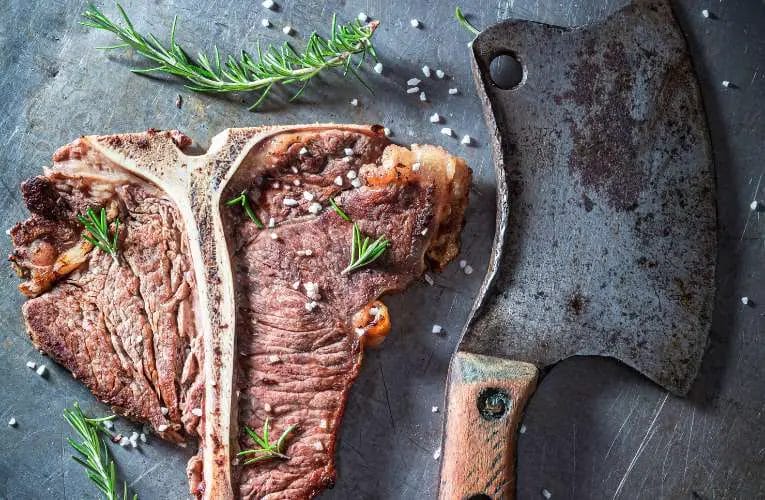
Beyond Medium Rare: Exploring Different Levels of Steak Doneness
When it comes to steak, the level of doneness can make all the difference in the world. From the tender and juicy medium rare to the well-done and charred, each level of doneness offers a unique eating experience.
In this section, we will explore the different levels of steak doneness and what sets them apart.
1. Rare
Rare is the steak lover’s delight for those who enjoy a bold and intense flavor. This level of doneness is achieved by cooking the steak quickly at high heat, resulting in a seared exterior and a cool, red center.
The center is often soft and tender, giving you a melt-in-your-mouth sensation. Rare steak is perfect for those who appreciate the natural flavors of meat and want to savor every bite.
2. Medium Rare
Medium rare is the most popular level of doneness among steak enthusiasts. It offers a balance between the tenderness of rare and the slightly more cooked center. Cooked to an internal temperature of about 130-135°F, this level of doneness provides a pink and warm center with a rich flavor.
The juices are sealed within the steak, resulting in a moist and succulent texture. Medium rare is often considered the ideal doneness for the perfect steak experience.
3. Medium
If you prefer a steak with a slightly more cooked center, then medium might be the right choice for you. Cooked to an internal temperature of 140-145°F, medium steak has a more pronounced pink center. It offers a good balance between tenderness and cooked flavor.
The juiciness is still present, although slightly less than that of medium rare. Medium steak brings out a bolder flavor profile while retaining a good amount of moisture.
4. Medium Well
For those who like their steak with a hint of pink in the center, medium well is the way to go. Cooked to an internal temperature of 150-155°F, medium well steak has a mostly cooked center with a slight blush of pink.
The meat becomes firmer and less juicy but still retains some tenderness. Medium well offers a balance between a well-cooked center and the flavors of the meat, making it a popular choice for those who prefer a more substantial steak.
5. Well Done
If you prefer your steak fully cooked with no pink at all, then well done is for you. Cooked to an internal temperature of 160°F and above, well-done steak has a uniformly cooked center with no trace of pink.
It is firmer and drier than the other levels of doneness, with a more charred exterior. Well-done steak offers a more intense cooked flavor but may lack the tenderness and juiciness of the less cooked options.
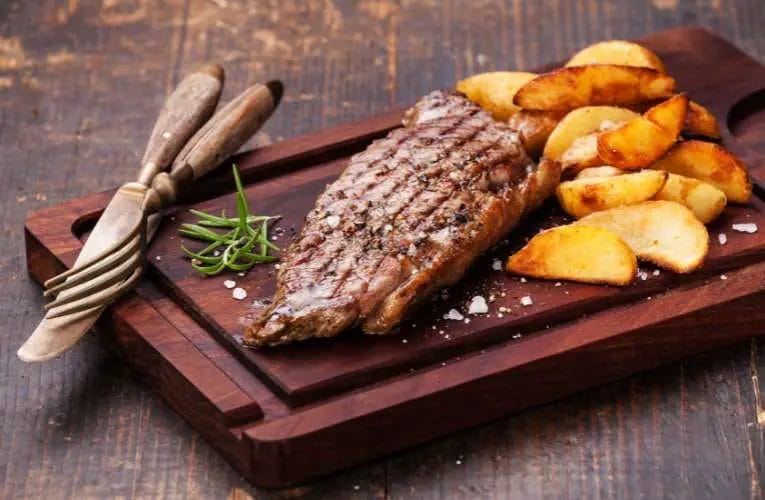
Tips and Tricks for Cooking the Perfect Tender Steak
Steak is a popular and delectable dish that many people enjoy. However, achieving the perfect tender steak can be a challenge for home cooks.
If you’re looking to elevate your steak cooking skills, we have some tips and tricks that will help you achieve a tender and flavorful steak every time.
1. Choose the Right Cut
The first step in cooking the perfect tender steak is selecting the right cut of meat. Different cuts have varying levels of tenderness and flavor.
Some of the most popular and tender cuts include ribeye, filet mignon, and New York strip. These cuts are known for their marbling and tenderness, making them ideal for cooking steak.
To enhance flavor and tenderness, consider opting for cuts that are dry-aged or have been wet-aged for at least 21 days. Dry-aged steaks have a more concentrated flavor, while wet-aged steaks are more tender.
2. Bring Steak to Room Temperature
Before cooking your steak, it’s essential to allow it to come to room temperature. This step ensures that the steak cooks evenly and results in a tender and juicy interior. Take the steak out of the refrigerator and let it sit at room temperature for about 30 minutes to an hour before cooking.
3. Season Properly
Proper seasoning is crucial to enhancing the flavor of your steak. Before cooking, generously season both sides of the steak with salt and pepper.
For an extra kick of flavor, you can also add other seasonings such as garlic powder, paprika, or rosemary. Let the steak sit for a few minutes to allow the seasoning to penetrate the meat.
4. Preheat the Grill or Pan
When it comes to cooking steak, a hot surface is key. Whether you’re using a grill or a pan, make sure it’s preheated to a high temperature. The high heat will sear the outside of the steak, sealing in the juices and creating a delicious crust.
5. Cook to the Right Temperature
Cooking the steak to the desired doneness is crucial for achieving the perfect tender result. Use a meat thermometer to ensure accuracy. Here are the recommended internal temperatures for different levels of doneness:
- Rare: 120-130°F (49-54°C)
- Medium Rare: 130-135°F (54-57°C)
- Medium: 135-145°F (57-63°C)
- Medium Well: 145-155°F (63-68°C)
- Well Done: 160°F (71°C) and above
Keep in mind that the steak will continue to cook slightly after it’s removed from the heat, so it’s a good idea to remove it from the grill or pan a few degrees below the desired temperature.
6. Let it Rest
After cooking, resist the temptation to cut into the steak right away. Letting the steak rest for about 5-10 minutes allows the juices to redistribute, resulting in a more tender and flavorful steak. Cover the steak loosely with foil during this resting period to keep it warm.
7. Slice Against the Grain
When it’s time to serve your perfectly cooked steak, make sure to slice it against the grain. Slicing against the grain breaks up the muscle fibers and results in a more tender bite. The grain refers to the lines running through the meat, and you want to cut perpendicular to those lines.
By following these tips and tricks, you’ll be well on your way to cooking the perfect tender steak. With practice and attention to detail, you’ll impress your family and friends with your culinary skills.
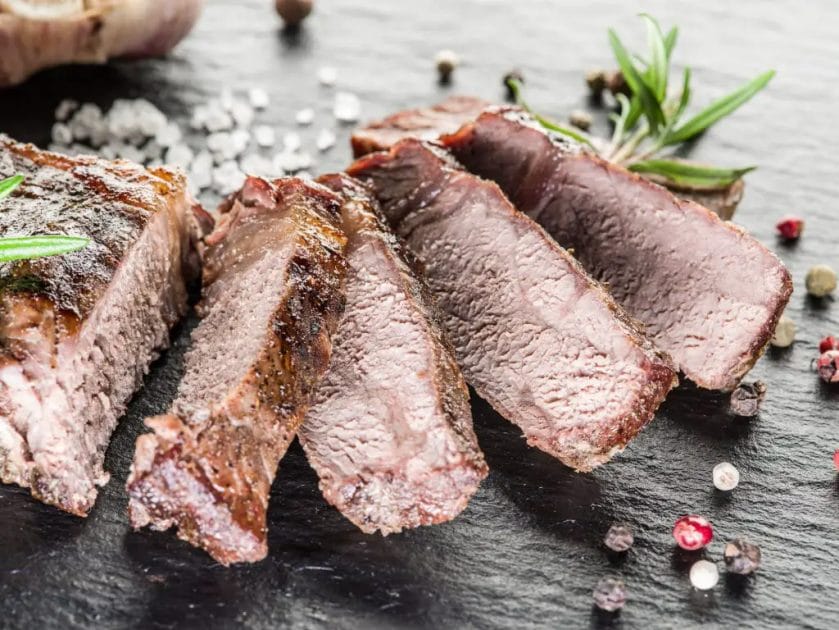
FAQs
Is well-done steak chewy?
Yes, well-done steak can be chewy because the longer it’s cooked, the more moisture it loses. This can result in a tougher texture. To minimize chewiness, it is recommended to cook steak to medium or medium-rare for a juicier and more tender result.
Conclusion:
In conclusion, the question of whether well-done steak is chewy is subjective and depends on personal preference. While some people enjoy the tenderness and juiciness of a medium-rare or medium steak, others prefer the firmer texture of a well-done steak.
It’s important to note that cooking a steak to the well-done stage generally results in a firmer and less juicy meat. However, this can be compensated for by marinating the steak beforehand or using cooking techniques to enhance its tenderness.
Ultimately, the chewiness of a well-done steak can be managed with the right preparation and cooking methods.

